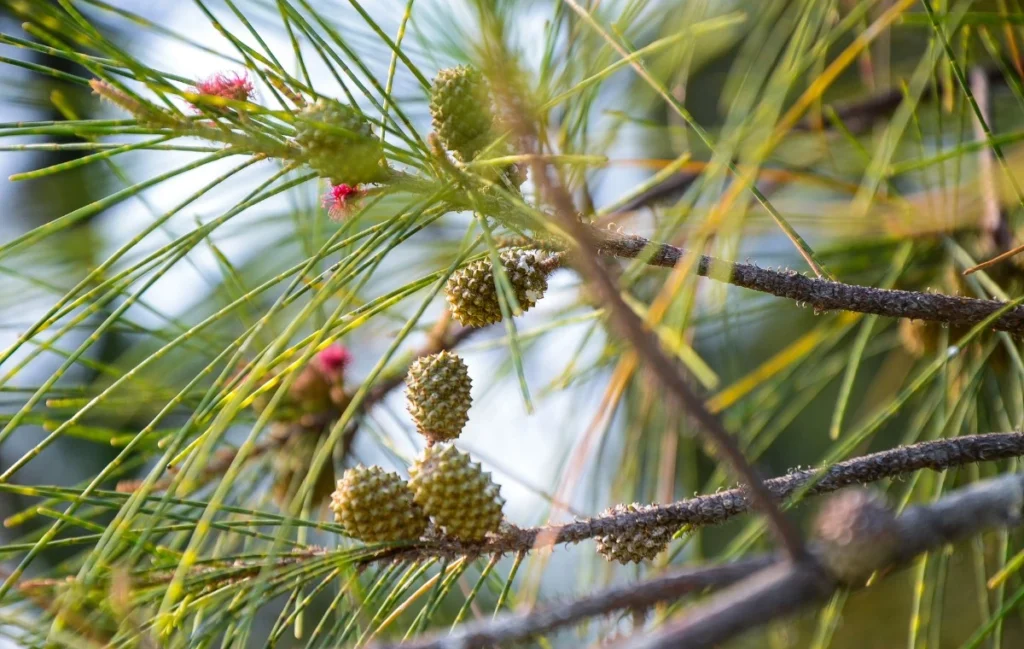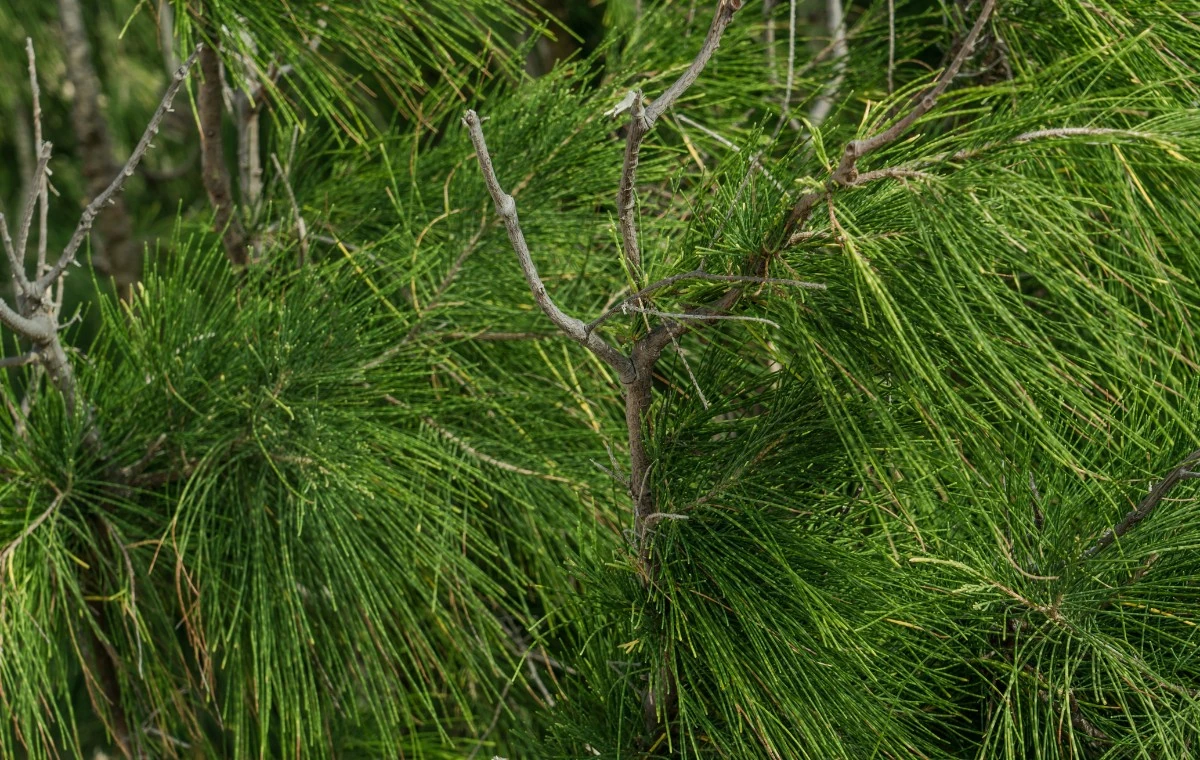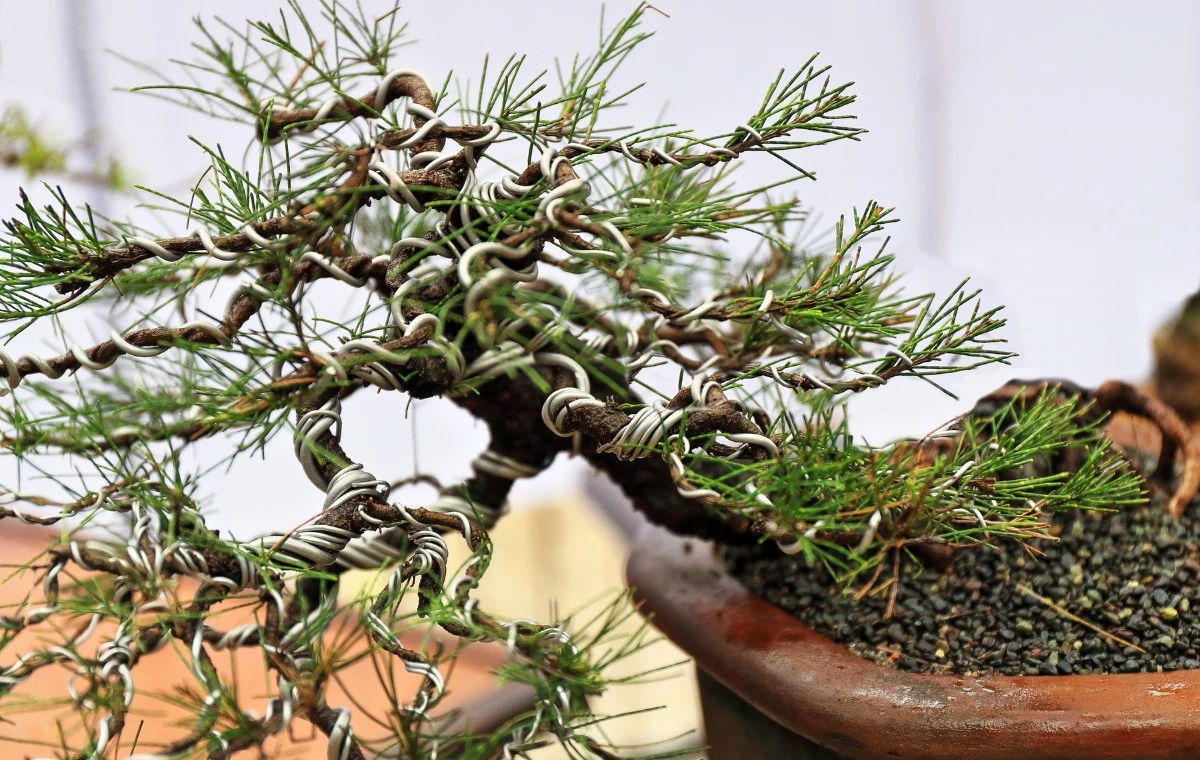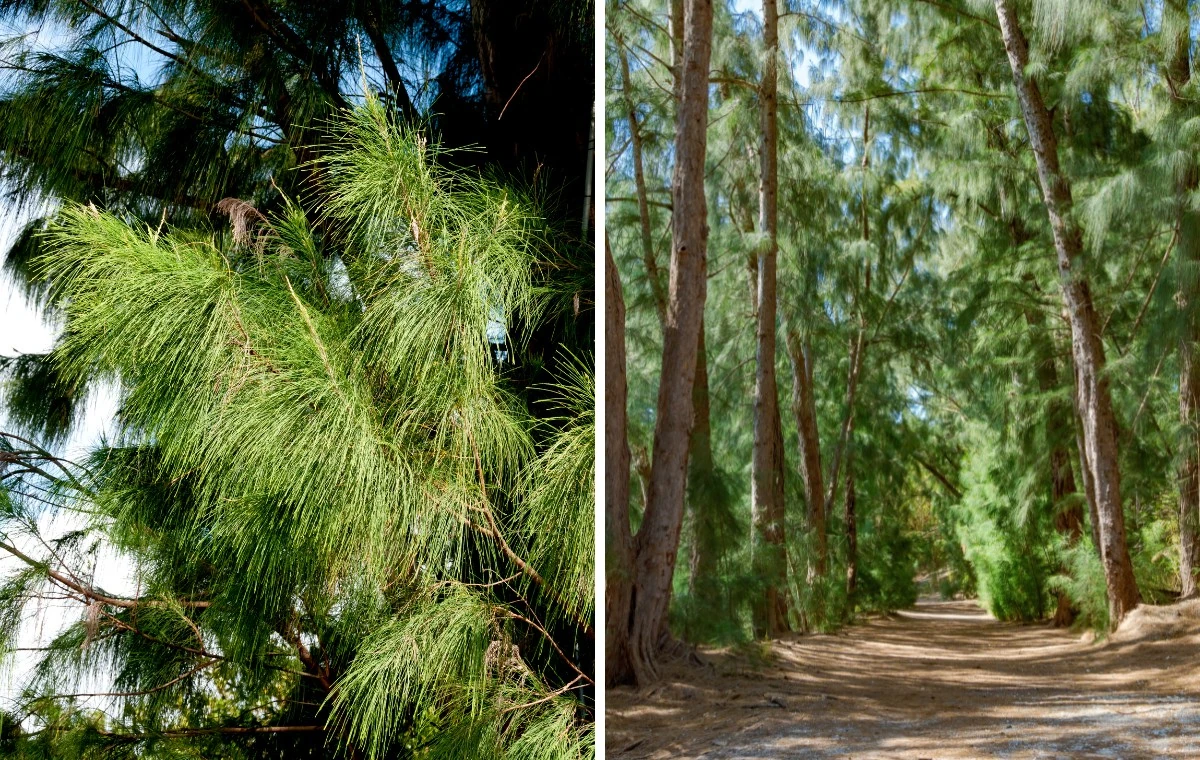The Australian Pine (Casuarina equisetifolia) is a monoecious tree native to Australia, now distributed worldwide, especially in coastal regions. It is a common misconception to think of the Australian Pine as a pine tree. In fact, it is an angiosperm species, meaning it produces fruit. The genus name Casuarina comes from the Malay word “kasuari,” a reference to the plumage of the cassowary bird, which resembles the tree’s pendulous branches. The specific epithet equisetifolia is derived from Latin and means “leaves similar to horsetail,” referring to the resemblance of its fine, segmented branches to plants of the genus Equisetum.
Its roots form a symbiotic relationship with bacteria of the genus Frankia, enabling the fixation of atmospheric nitrogen. It is a large tree with a straight trunk, reaching heights of 15 to 40 meters (49 to 131 feet) and a diameter of up to 50 cm (19.7 inches). The trunk has light brown bark, rough in mature specimens, and is rich in tannins. Its leaves are rudimentary and almost imperceptible, but it features pendulous, thread-like, and jointed branches formed by the petioles and leaf sheaths. These branches are responsible for the plant’s photosynthesis.
The inflorescences lack ornamental value. Male flowers are catkin-like, small, terminal, cylindrical, and brown, while female flowers are globose, lateral, green, and axillary. The fruit is a woody samara with an oval shape and chambers that open when mature to release winged seeds, which are dispersed by the wind.
Australian Pine is primarily recommended for landscaping in coastal regions, as it adapts very well to these conditions. However, it is common to see Australian Pines disfigured by improper pruning, which detracts from their aesthetic appeal. Its use should therefore be carefully considered, particularly with regard to its large size and the space and proportion it will occupy. Another important consideration is its allelopathic effect. Where Australian Pines grow, smaller plants rarely thrive. This effect is more pronounced in groups or clusters where dead foliage accumulates on the soil. This species is also widely used for bonsai cultivation.
With rapid growth, Australian Pines are suitable for controlling dune erosion and rehabilitating severely degraded areas, such as abandoned mining sites. They also serve as effective windbreaks. The wood of the Australian Pine is very hard and can be used for a wide range of purposes, although it is challenging to work with. In Australia, it is commonly used for construction, as well as for making furniture, boats, posts, fences, roofing, and crafts. It boasts one of the highest calorific values among woods, making it an excellent charcoal when dried. However, it is considered invasive in certain situations.
It should be cultivated in full sun or partial shade, preferably in light, well-drained soils enriched with organic matter. Watering should be regular until establishment, meaning when the plant shows clear signs of vigorous growth. Once well-adapted, it can tolerate periods of drought. The Australian Pine withstands extreme temperatures, wind, poor soils, and the salinity typical of coastal regions. It also tolerates frost, as long as it is neither too severe nor frequent. Propagation can be done via cuttings or seeds, which require no special treatment and have excellent germination rates.





